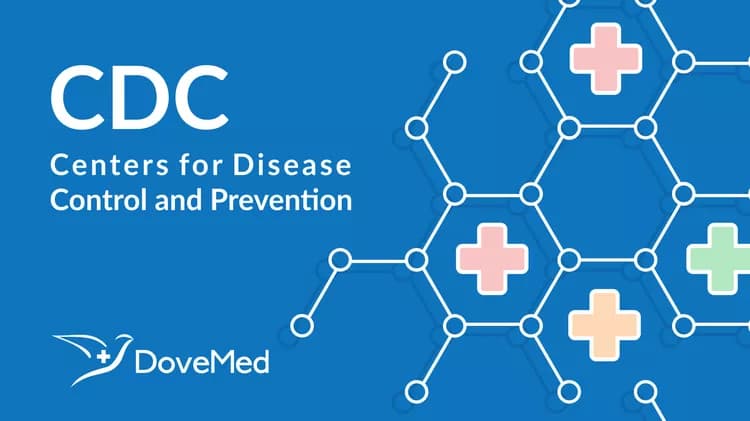
Twin Epidemics of Diabetes and Obesity Continue to Threaten the Health of Americans CDC Says
Twin Epidemics of Diabetes and Obesity Continue to Threaten the Health of Americans CDC Says
The decade of the 90's witnessed dramatic increases in diabetes and obesity in the United States, and at the same time, Americans showed little improvement in eating habits or increasing their physical activity, the Centers for Disease Control and Prevention (CDC) reported today.
In a study published in this week’s Journal of the American Medical Association (JAMA), CDC found a 61 percent increase in the number of Americans who are obese from 1991 to 2000 (12.0 percent to 19.8 percent), and a 49 percent increase in the number of Americans who have diabetes from 1990 to 2000 (4.9 percent to 7.3 percent). Especially dramatic are the one-year increases CDC observed for both obesity and diabetes. Between 1999 and 2000, diabetes increased from 6.9 percent to 7.3 percent and obesity jumped from 18.9 percent to 19.8 percent. Furthermore, 27.3 percent of Americans did not engage in any physical activity during the 1990s and only about a quarter of Americans consumed the recommended five or more servings of fruits and vegetables a day.
"The epidemics of diabetes and obesity are clearly escalating in the United States," said said CDC Director Dr. Jeffrey P. Koplan. "If we continue on this course for the next decade, the public health implications in terms of both disease and health care costs will be staggering."
Currently, about 9.4 percent of the national health care expenditures in the United States are directly related to obesity and physical inactivity. In 1997, the health care costs associated with diabetes were an estimated $98 billion. "We must intensify our efforts to prevent and treat these epidemics," Koplan said.
According to the study, the increases in both diabetes and obesity were observed in all demographic and geographic segments of the population. Mississippi was found to have the highest rates of both obesity (24.3 percent) and diagnosed diabetes (8.8 percent) while Colorado had the lowest rate of obesity (13.8 percent) and Alaska had the lowest rate for diabetes (4.4 percent). Blacks had the highest rates of both obesity (29.3 percent) and diabetes (11.1 percent) among all races and ethnic groups, and individuals with less than a high school education had higher rates of both obesity (25.1 percent) and diabetes (13.1 percent) than those with high school education.
"These recent, national increases have more to do with lifestyle than with the genetic make-up," said Dr. Frank Vinicor, director of CDC’s diabetes program. "We are encouraged by new studies that show healthy eating and regular physical activity can actually prevent or delay the onset of type 2 diabetes even in high-risk individuals. Promoting healthy lifestyles should be a national priority, beginning in our schools and carrying over into our work places, communities, and especially into our health care system."
This report indicates that individuals who receive advice on losing weight from a health care professional are more likely to try to lose weight compared to those who do not receive advice. Only about 43.1 percent of participants who were considered to be obese received advice from a health professional about losing weight; 15.8 percent of overweight participants received such advice. Obesity and overweight are determined by body mass index (BMI) (weight in kilograms divided by height in meters squared). Participants were considered obese if their BMI was 30 or greater and overweight if their BMI was 25 or greater. A 5-foot 4-inch person with a BMI of 30 or greater is 30 or more pounds overweight.
The data in the report were taken from Behavioral Risk Factor Surveillance System (BRFSS), a state-base survey that collects information from adults aged 18 years and older. For this survey, participants were asked if they had ever been told by a doctor that they had diabetes or been given advice by a health professional about weight. They were also asked to report on their diet, leisure-time physical activities, and weight loss activities. Only 17.5 percent were following the recommended guidelines of at least 30 minutes of moderate physical activity most days of the week and a lower caloric intake.
"Our findings were striking," said Ali Mokdad, PhD, a CDC epidemiologist and lead author of the JAMA article. "Both obesity and diabetes are preventable and yet more than 60 percent of Americans are overweight or obese, and about 15 million Americans aged 18 years or older had diagnosed diabetes in 2000," Mokdad said.
Approximately 800,000 new cases of diabetes are diagnosed each year, and most people with diabetes (90 percent to 95 percent) have "type 2." Older age, physical inactivity, obesity, and family history are the main risk factors for type 2 diabetes. Type 1 diabetes, previously called juvenile-onset, represents about 5 percent to 10 percent of diabetes cases and is not associated with lifestyle.
For more information about diabetes and obesity, please visit the following CDC web sites: http://www.cdc.gov/diabetes and http://www.cdc.gov/nccdphp/dnpa or call toll free 877-CDC-DIAB (877-232-3422) and 888-CDC-4NRG (888-232-4674).
###
CDC protects people’s health and safety by preventing and controlling diseases and injuries; enhances health decisions by providing credible information on critical health issues; and promotes healthy living through strong partnerships with local, national, and international organizations.
Related Articles
Test Your Knowledge
Asked by users
Related Centers
Related Specialties
Related Physicians
Related Procedures
Related Resources
Join DoveHubs
and connect with fellow professionals

0 Comments
Please log in to post a comment.